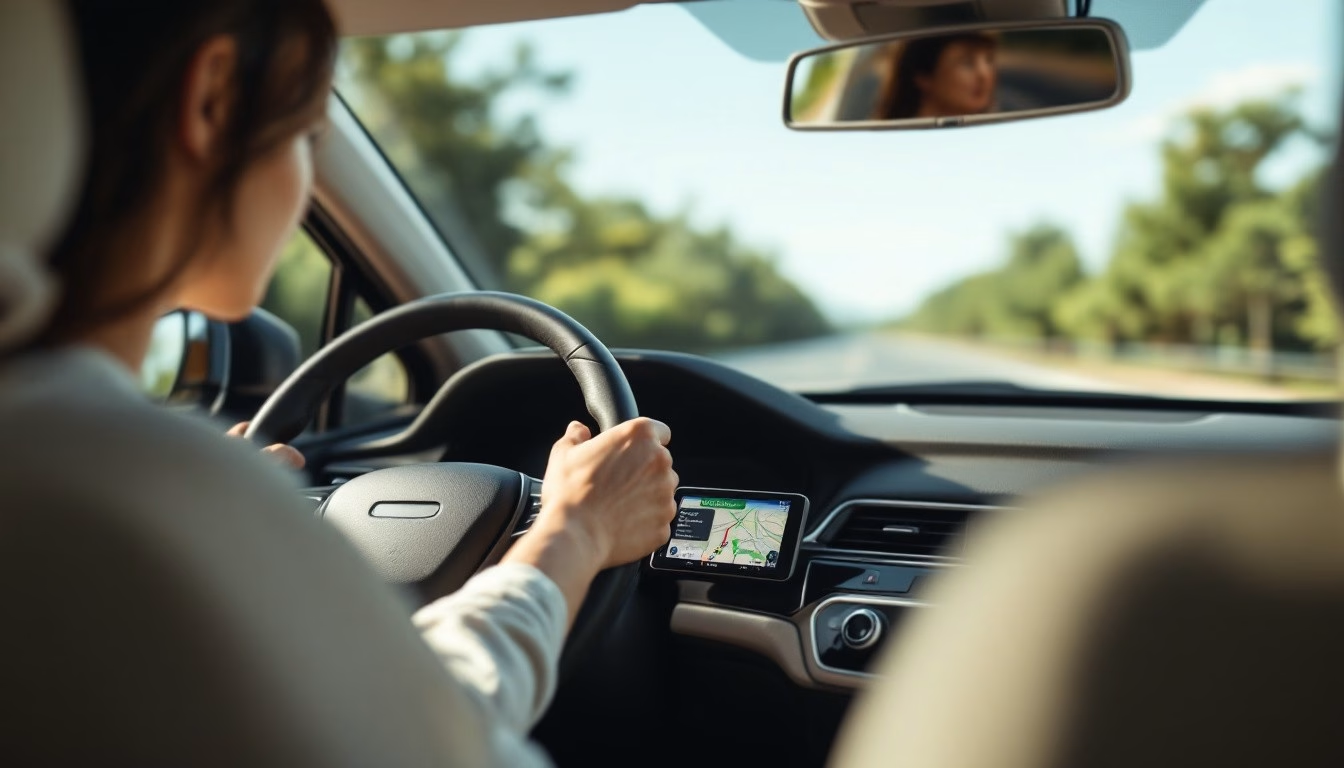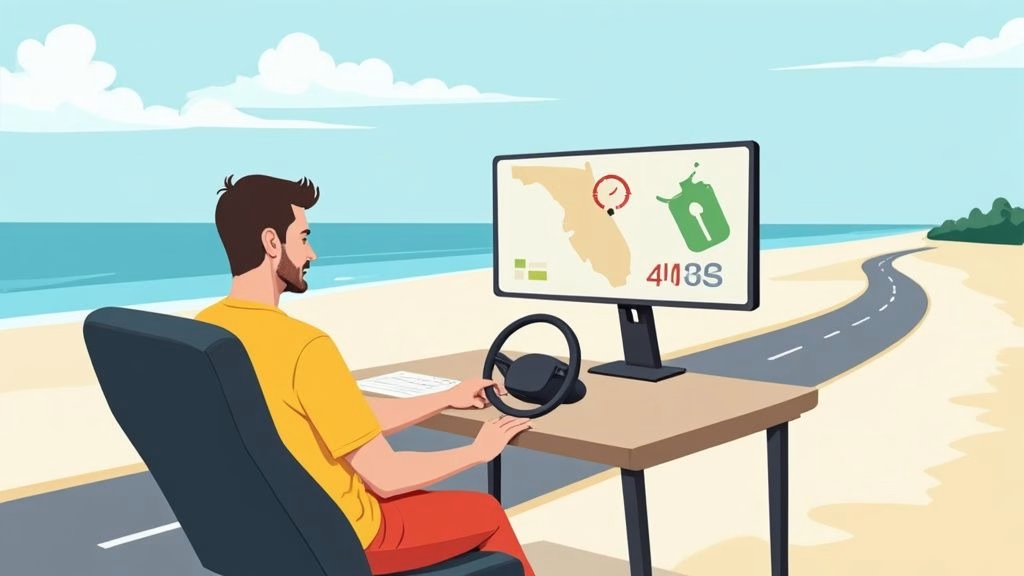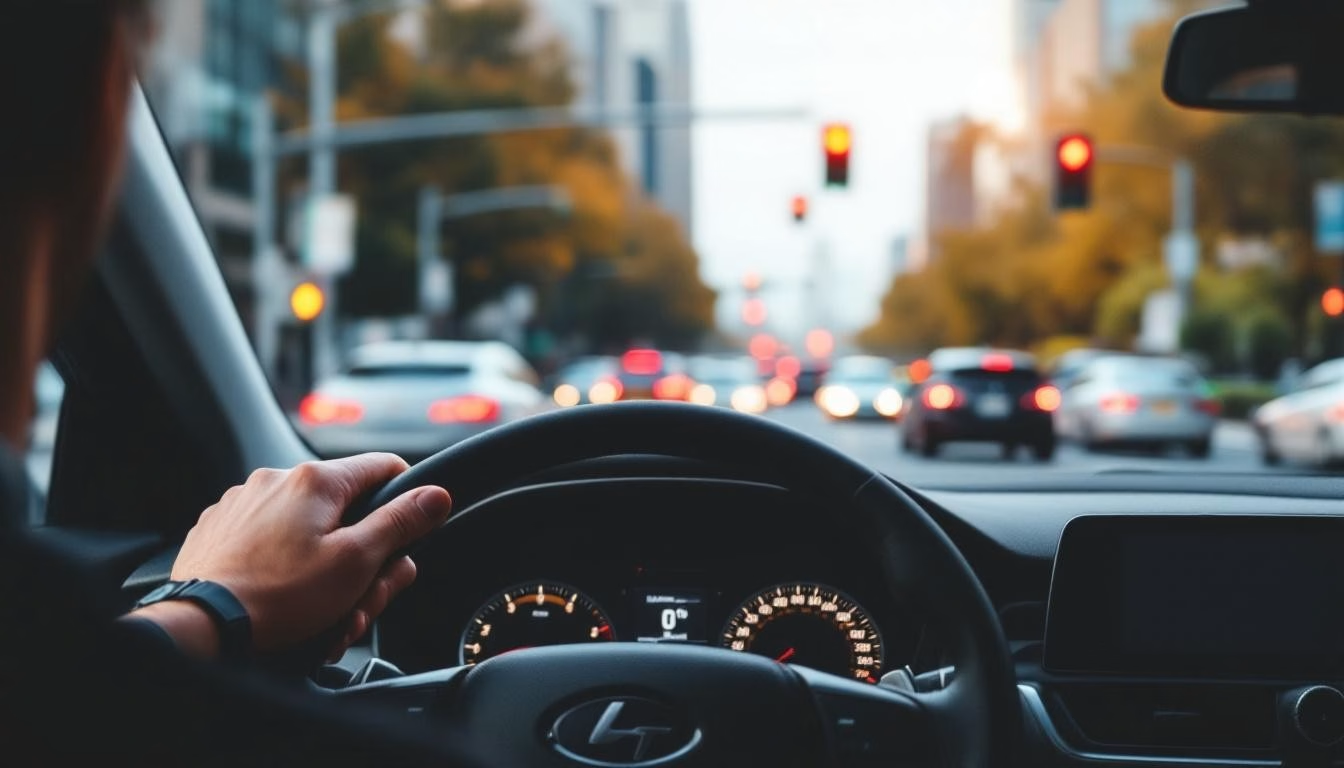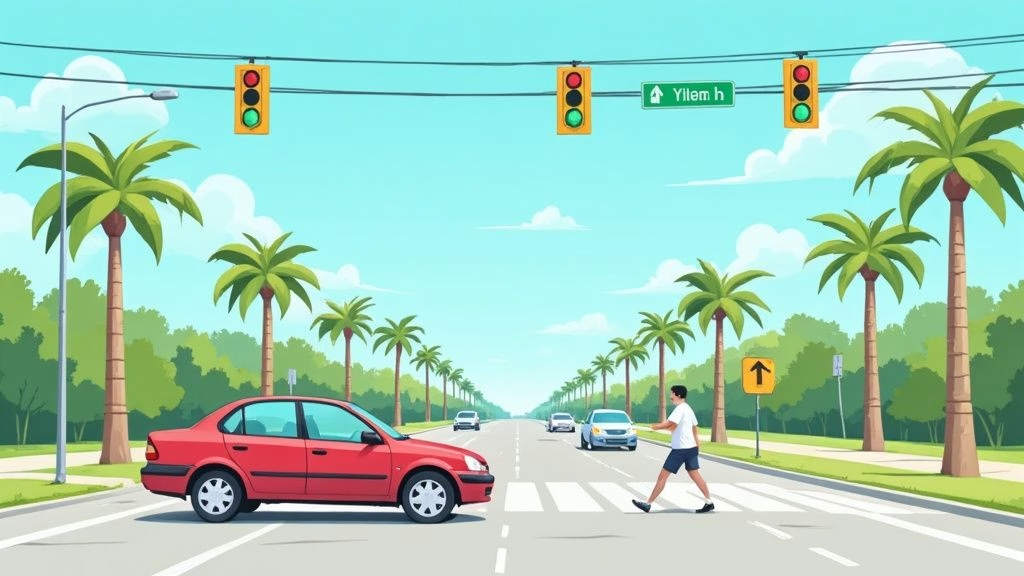Learning to drive should be exciting, but for many new drivers, anxiety turns this milestone into a source of stress. Studies show that 66% of new drivers experience some form of driving anxiety during their first year behind the wheel.
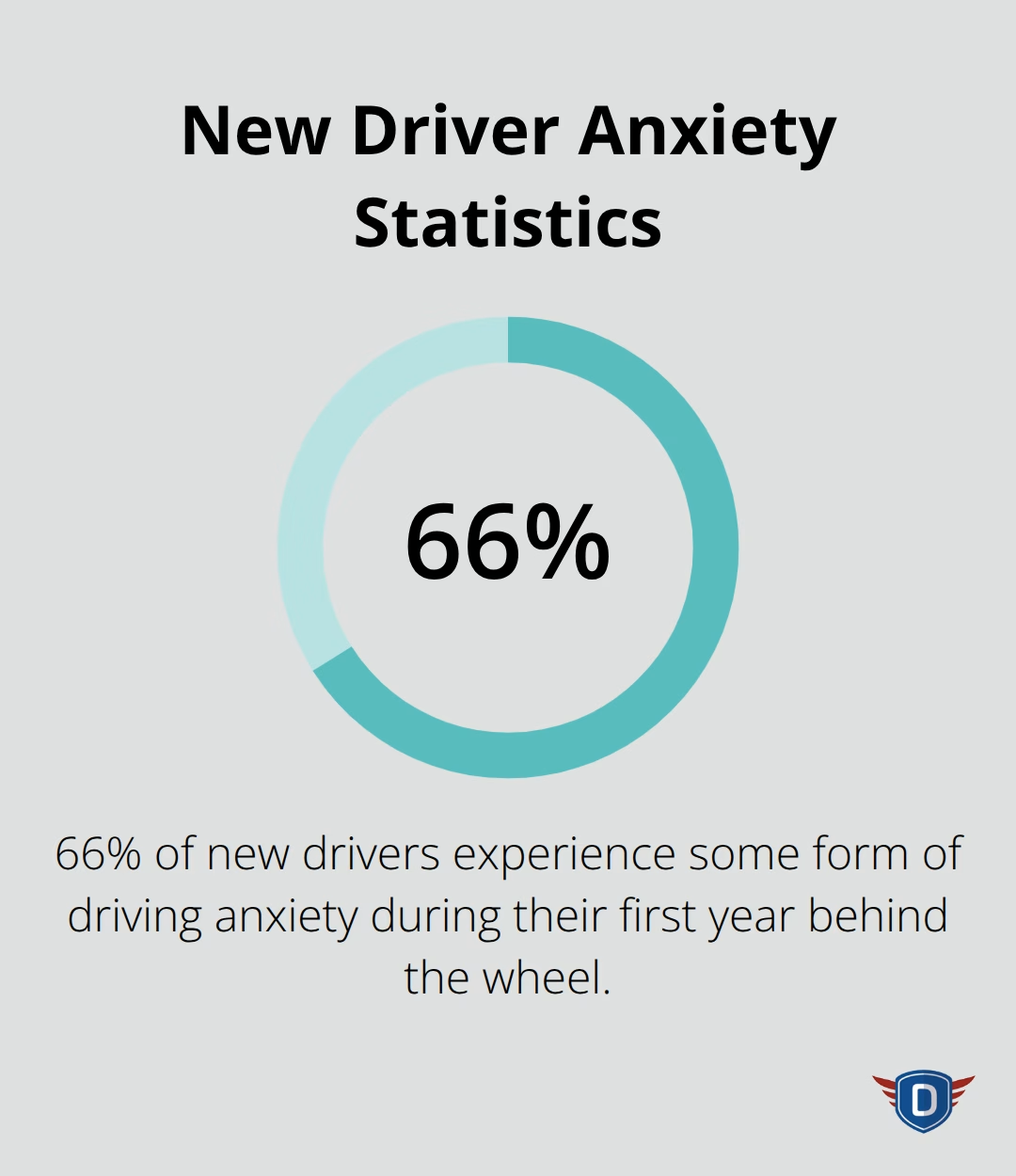
At floridadetscourse.com, we understand that driving lessons for anxious drivers require specialized approaches and patience. The good news is that driving anxiety is completely manageable with the right techniques and support system.
What Does Driving Anxiety Actually Look Like
Driving anxiety shows itself through specific physical and emotional symptoms that directly impact your ability to learn. The most common signs include sweaty palms, rapid heartbeat, and muscle tension while you grip the steering wheel. Research shows that drivers with mood disorders demonstrate higher overall crash rates than those without mood disorders. These physical responses often combine with mental symptoms like racing thoughts, difficulty focusing on road signs, and an overwhelming urge to avoid certain situations entirely.
Physical Warning Signs That Block Learning
Your body sends clear signals when anxiety takes hold. Shaky hands make it harder to control the steering wheel smoothly, while shallow breathing reduces oxygen flow to your brain and impairs decision-making. Many anxious drivers report dizziness or nausea, particularly when they approach busy intersections or highway on-ramps. These physical reactions create a cycle where poor performance increases anxiety, which then worsens skills. Women experience these symptoms more frequently than men according to recent surveys.
Why Fear Develops During Driver Education
New drivers face genuine challenges that trigger anxiety responses. Highway merging ranks as the top fear for many learners, followed by parallel parking and backing up situations. Your brain perceives driving as a high-stakes activity where mistakes could have serious consequences. This fear intensifies when you lack experience with vehicle controls or feel uncertain about traffic rules. Past traumatic experiences, even as passengers, can resurface during lessons and create additional mental barriers to effective learning.
How Anxiety Sabotages Skill Development
Anxiety directly interferes with the learning process when it overwhelms your working memory. When your mind focuses on fear rather than instruction, you miss important feedback from your instructor. Research identifies anxious driving behavior including exaggerated safety behaviors, anxiety-based performance deficits, and avoidance patterns. This delayed progress often leads to frustration and self-doubt, which creates additional pressure during lessons. The result is a pattern where anxiety prevents skill improvement, which then validates the original fears about ability.
The good news is that specific techniques can break this cycle and help you regain control over both your anxiety and your learning progress.
How Can You Control Anxiety While Driving
The 4-7-8 technique delivers immediate anxiety relief while you drive. You inhale through your nose for 4 counts, hold your breath for 7 counts, then exhale through your mouth for 8 counts. This specific pattern activates your parasympathetic nervous system and counterbalances high sympathetic activity intrinsic to stress and anxiety. Practice this technique 5 times before you start your car and repeat it at red lights when anxiety peaks. Progressive muscle relaxation also helps when you tense your shoulders for 5 seconds, then release completely while you focus on the contrast between tension and relaxation.
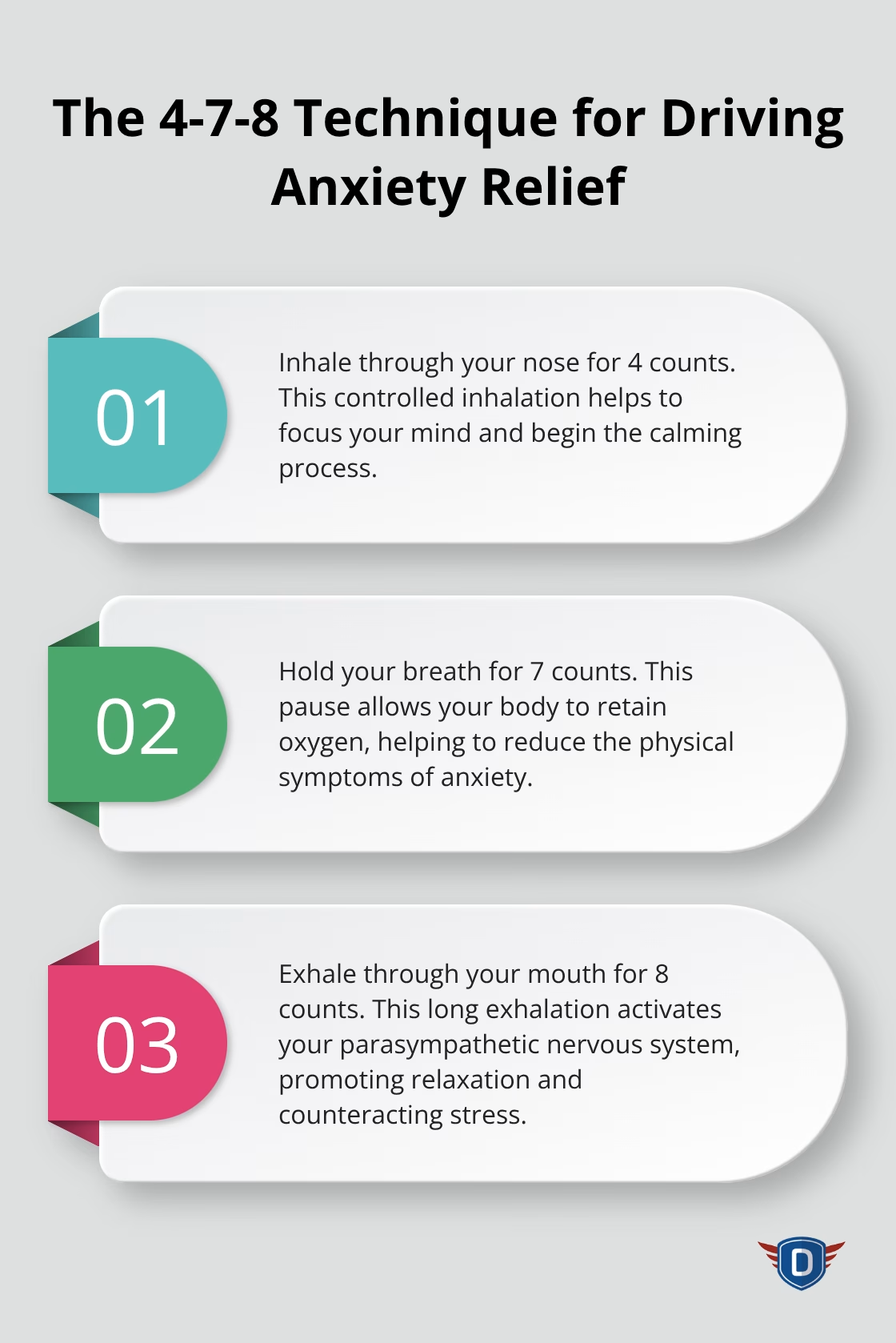
Start Small and Build Systematically
Empty lots provide the perfect environment for anxious drivers because they eliminate traffic pressure completely. Spend your first 10 practice sessions in these controlled environments, where you focus on basic vehicle control without other drivers around. Next, move to quiet residential streets during off-peak hours before 8 AM or after 7 PM when traffic is significantly reduced. This gradual exposure method prevents your nervous system from overwhelm while it builds actual competence. Set specific weekly goals like travel 2 blocks further each session rather than vague objectives about better feelings.
Preparation Eliminates Most Fears
Pre-drive vehicle checks reduce anxiety because they give you complete control over your environment before movement. Adjust your mirrors, seat position, and climate controls while the car stays stationary to avoid mid-drive distractions that trigger panic responses. Study your route with GPS apps beforehand and identify 3 alternative paths to your destination. This preparation prevents the fear of lost directions, which ranks among the top anxiety triggers for new drivers.
Track Your Progress With Documentation
Keep a journal to track which situations cause the most stress and celebrate specific improvements like smoother turns or confident lane changes. Write down your anxiety level (on a 1-10 scale) before and after each practice session to identify patterns and measure progress objectively. Note weather conditions, traffic density, and specific maneuvers that felt easier each week. This documentation helps you recognize improvement even when anxiety makes progress feel invisible.
These practical techniques work best when you combine them with professional guidance and structured support systems that address the deeper aspects of anxiety management.
Who Can Help With Your Driving Anxiety
Certified instructors who specialize in anxiety management make the biggest difference in your learning experience. These professionals understand that driving anxiety affects many learners, so they adapt their methods accordingly. Look for instructors with specific training in anxiety management techniques rather than standard education. They use systematic desensitization approaches where you practice one skill at a time in controlled environments. The best instructors start with stationary vehicle familiarization for 2-3 sessions before any movement occurs.
These specialists provide consistent positive reinforcement and avoid criticism that increases stress responses. When you interview potential instructors, ask about their experience with anxious students and request references from previous clients who overcame similar fears. Professional driving courses create structured lesson plans that progress at your individual pace rather than following rigid timelines.
Specialized Programs Target Root Causes
Virtual Reality Exposure Therapy programs help you practice dangerous scenarios without real-world risks. These programs cost between $150-300 per session but provide controlled exposure to highway merging, parallel parking, and busy intersection navigation. The technology allows you to experience realistic situations while your therapist monitors your responses and teaches coping strategies.
Cognitive Behavioral Therapy specifically addresses phobias through thought pattern restructuring. CBT effectively treats anxiety disorders through structured approaches. Group therapy sessions for anxiety cost significantly less than individual treatment while they provide peer support from others who face identical challenges.
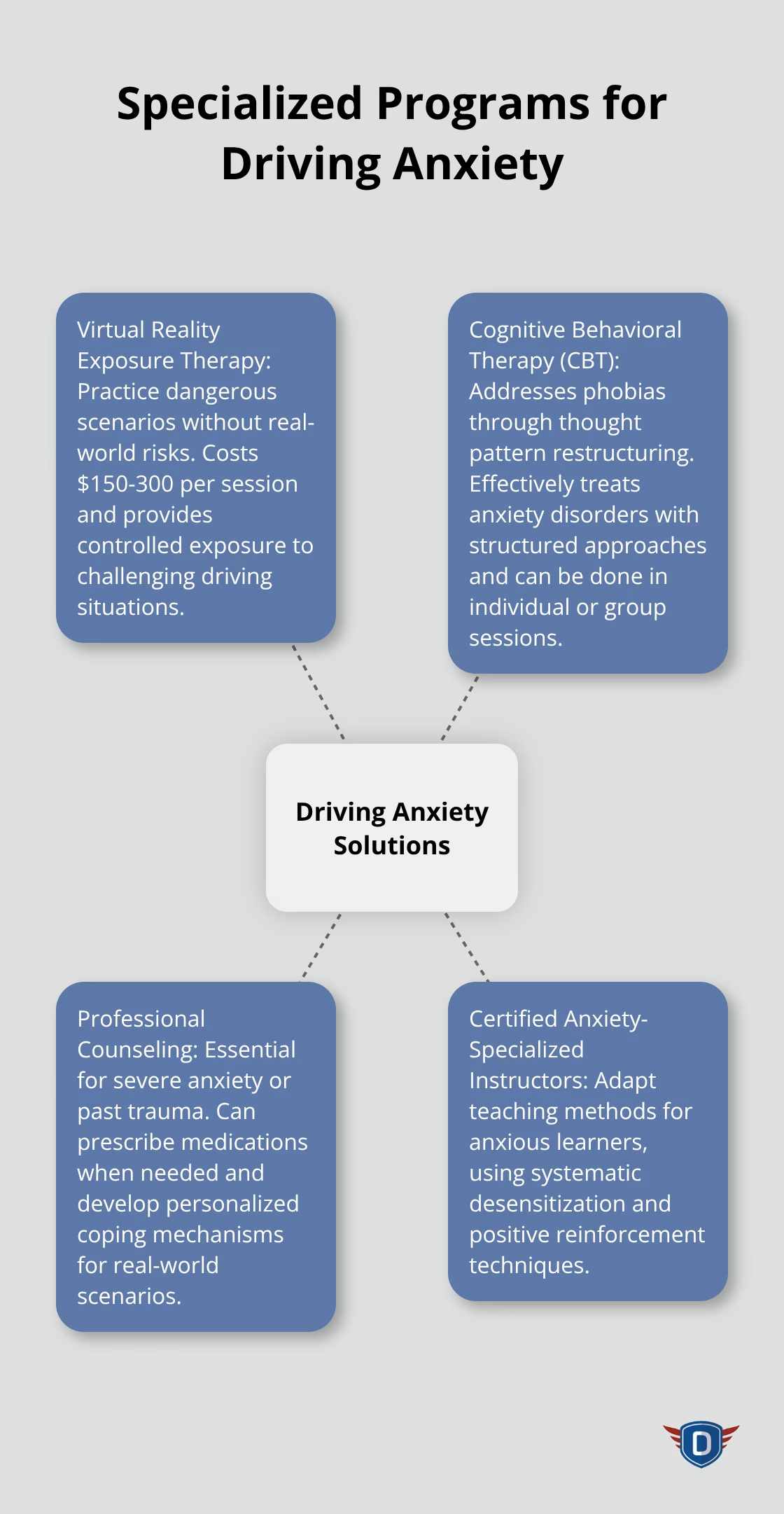
When Professional Counseling Becomes Necessary
Seek professional help immediately if your anxiety prevents you from attempting lessons for more than 6 months. Therapists become essential when you experience panic attacks at the thought of operating a vehicle or when past traumatic experiences interfere with current learning. The National Institute of Mental Health indicates that untreated anxiety disorders worsen over time and create additional complications.
Professional counseling addresses underlying anxiety disorders that extend beyond situations behind the wheel. Therapists can prescribe anti-anxiety medications when appropriate and monitor your progress through structured treatment plans. They also teach you how to identify triggers and develop personalized coping mechanisms that work in real-world scenarios (not just during practice sessions).
Final Thoughts
Drivers who overcome initial anxiety develop superior hazard awareness and defensive driving skills compared to those who never experienced fear. Research shows that this heightened awareness stems from the careful attention anxious drivers pay to potential risks during their learning process. The techniques you practice while you manage anxiety become permanent safety habits that protect you throughout your career behind the wheel.
Deep breathing exercises naturally evolve into stress management tools for challenging traffic situations. Progressive exposure methods teach you to assess risks accurately rather than avoid them completely. These skills prevent overconfidence that leads many experienced drivers into dangerous situations (while also building resilience that extends beyond transportation).
We at floridadetscourse.com provide driving lessons for anxious drivers through personalized instruction that respects your individual pace and concerns. Our certified instructors create supportive environments where anxiety becomes a stepping stone rather than a barrier. Take your first step toward independence by contacting us to discuss your specific fears and develop a customized learning plan.

